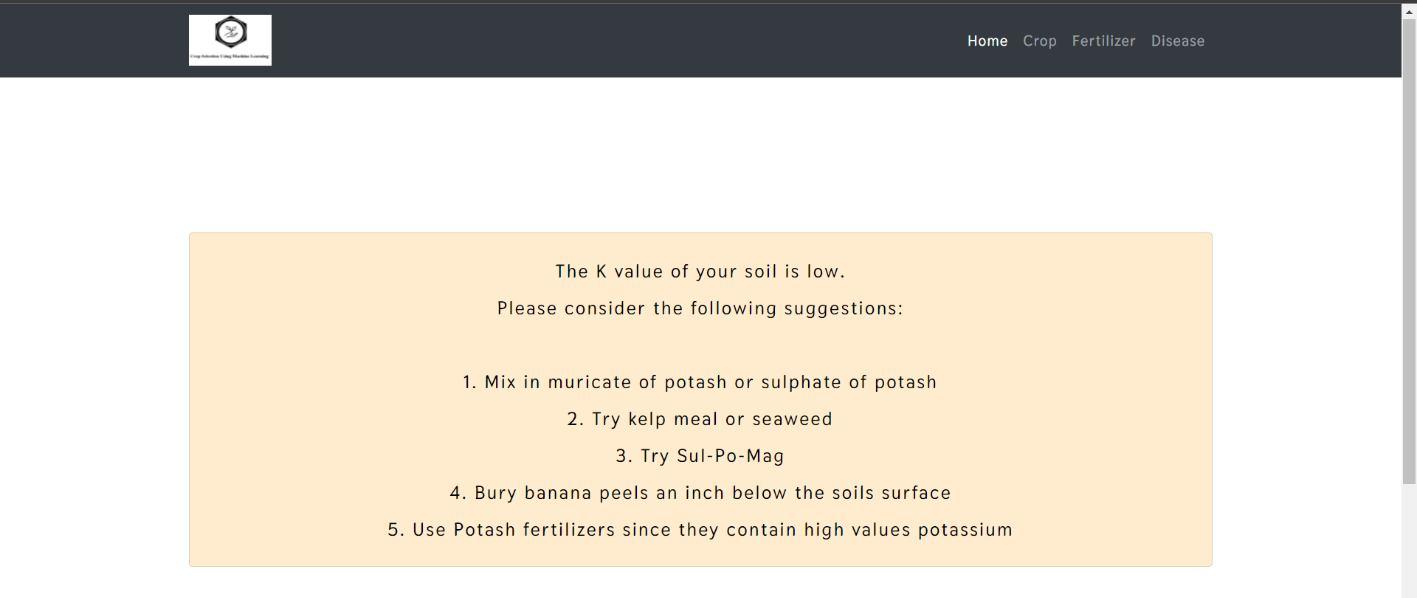
1 minute read
International Journal for Research in Applied Science & Engineering Technology (IJRASET)
from Raita Mitra for Crop and Pesticide Recommendation along with Disease Prediction using ML
by IJRASET


Advertisement
ISSN: 2321-9653; IC Value: 45.98; SJ Impact Factor: 7.538
Volume 11 Issue II Feb 2023- Available at www.ijraset.com
ISSN: 2321-9653; IC Value: 45.98; SJ Impact Factor: 7.538

Volume 11 Issue II Feb 2023- Available at www.ijraset.com
Figure 11 and 12 shows the results of test image uploaded and predicted. Results contain the details of disease identified and also prefer the pesticide for the identified disease along with the description of the usage of pesticide


V. CONCLUSION

This work is employed to gain the knowledge about the crop that can be deployed to make an efficient and useful harvesting. While the existing system, lags a bit in accuracy in prediction. The ultimate result that was foretold wasn’t that accurate with the original. To overcome this drawback, we have a proposed a work replacement technique with random forest algorithm. It takes only less time for its processes and the accuracy of the prediction is high. In leaf disease prediction, it focus on how image from given dataset (trained dataset) are used predict the plant leaf diseases using CNN model. This brings some of the insights about plant leaf disease prediction. As maximum types of plant leaves will be covered under this system, farmer may get to know about the leaf which may never have been cultivated and can lists out all possible plant leaves, it helps the farmer in decision making of which crop to cultivate. Also, help the farmer to get insight into the demand and the cost of various plants in market.
References
[1] S. Das. Filters, wrappers and a boosting-based hybrid for feature selection. In International conference on machine learning 1 (2001), pp. 74–81.
[2] H. Liu and Y. Lei, toward integrating feature selection algorithms for classification and clustering, IEEE Trans. Knowl. Data Eng. 17 (2005), pp. 491–502. doi:10.1109/ TKDE.2005.66.
[3] A. Maruf, M. Abdullah, and S. Shatabda, iRSpot-SF: Prediction of recombination hotspots by incorporating sequence-based features into Chou’s Pseudo components, Genomics 111 (2019), pp. 966–972. doi: 10.1016/j.ygeno.2018.06.003.
[4] I. Kononenko, Estimating attributes: Analysis and extensions of RELIEF. European conference on machine learning 784 (1994), pp. 171–182.


